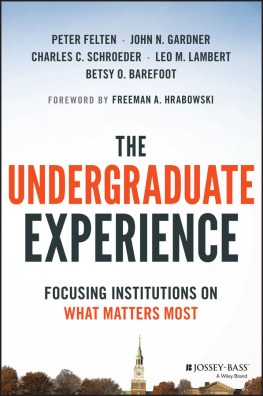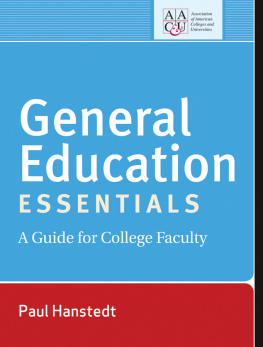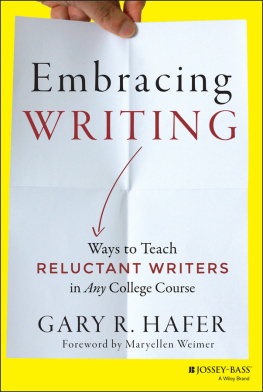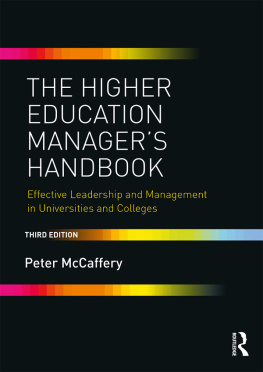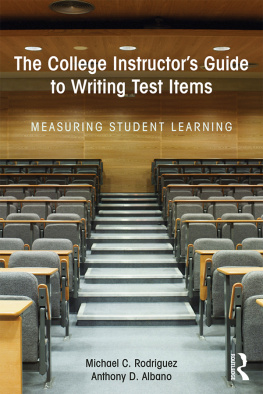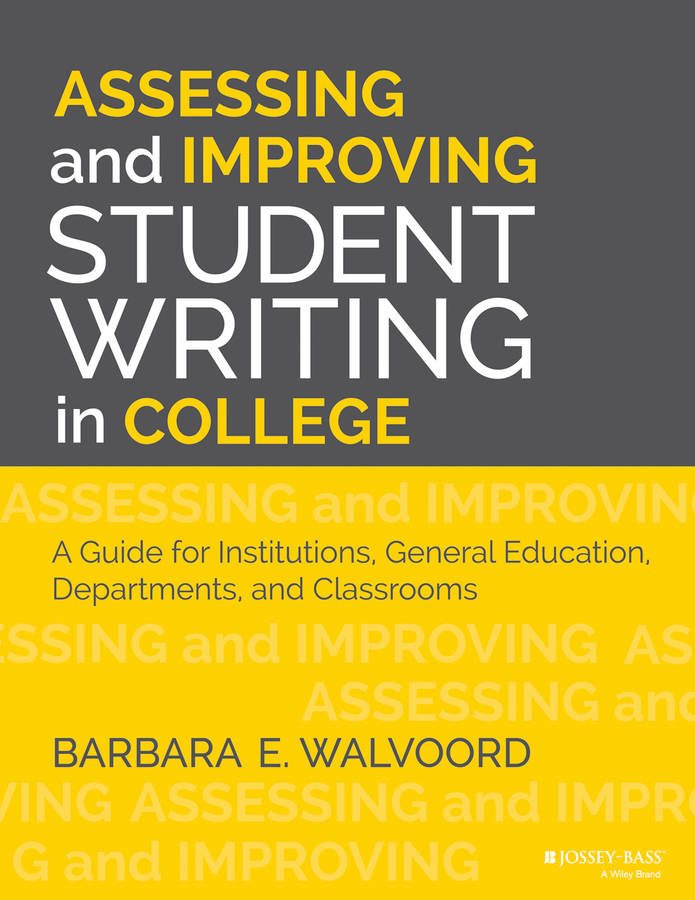Barbara E. Walvoord - Assessing and Improving Student Writing in College: A Guide for Institutions, General Education, Departments, and Classrooms
Here you can read online Barbara E. Walvoord - Assessing and Improving Student Writing in College: A Guide for Institutions, General Education, Departments, and Classrooms full text of the book (entire story) in english for free. Download pdf and epub, get meaning, cover and reviews about this ebook. year: 2014, publisher: Wiley, genre: Home and family. Description of the work, (preface) as well as reviews are available. Best literature library LitArk.com created for fans of good reading and offers a wide selection of genres:
Romance novel
Science fiction
Adventure
Detective
Science
History
Home and family
Prose
Art
Politics
Computer
Non-fiction
Religion
Business
Children
Humor
Choose a favorite category and find really read worthwhile books. Enjoy immersion in the world of imagination, feel the emotions of the characters or learn something new for yourself, make an fascinating discovery.

- Book:Assessing and Improving Student Writing in College: A Guide for Institutions, General Education, Departments, and Classrooms
- Author:
- Publisher:Wiley
- Genre:
- Year:2014
- Rating:3 / 5
- Favourites:Add to favourites
- Your mark:
Assessing and Improving Student Writing in College: A Guide for Institutions, General Education, Departments, and Classrooms: summary, description and annotation
We offer to read an annotation, description, summary or preface (depends on what the author of the book "Assessing and Improving Student Writing in College: A Guide for Institutions, General Education, Departments, and Classrooms" wrote himself). If you haven't found the necessary information about the book — write in the comments, we will try to find it.
Effective communication is a critical skill for many academic disciplines and careers, and so colleges and universities and their faculty members are rightfully committed to improving student writing across the curriculum. Guiding and assessing student writing in classrooms, general education, and departments takes knowledge, planning, and persistence, but it can be done effectively and efficiently.
Written in the concise, accessible style Barbara Walvoord is known for, Assessing and Improving Student Writing in College: A Guide for Institutions, General Education, Departments, and Classrooms offers administrators, program chairs, general education leaders, and classroom instructors the guidance they need. The book provides concrete suggestions for how to:
The book begins by addressing four basic concepts: what we mean by writing, what we mean by good writing, how students learn to write, and the purposes of assessment. Next, Walvoord explains the various approaches and methods for assessing writing, urging a combination of them adapted to the institutions purposes and political context. After this introduction, successive chapters offer realistic, practical advice to institution-wide and general education leaders, department members, and classroom instructors.
Walvoord addresses issues such as how to engage faculty, how to use rubrics, how to aggregate assessment information at the department and institutional levels, and how to report assessment information to accreditors. The chapter for classroom instructors offers practical suggestions: how to add more writing to a course without substantially increasing the grading load; how to construct writing assignments, how to make grading and responding more effective and time-efficient, how to address grammar and punctuation, and how to support students whose native language is not English.
The book also includes four helpful appendices: a taxonomy of Writing Across the Curriculum (WAC) and Writing in the Disciplines (WID) programs; sample outlines for faculty development workshops; a student survey on teaching methods instructors can use to inform their choices in the classroom; and a student self-check cover sheet designed to help students take ownership of their own learning and responsibility for turning in complete, correct assignments.
Practical, step-by-step guidance for each point in the assessment and improvement process creates a cohesive, institution-wide system that keeps students, faculty, and administrators on the same page.
Barbara E. Walvoord: author's other books
Who wrote Assessing and Improving Student Writing in College: A Guide for Institutions, General Education, Departments, and Classrooms? Find out the surname, the name of the author of the book and a list of all author's works by series.

